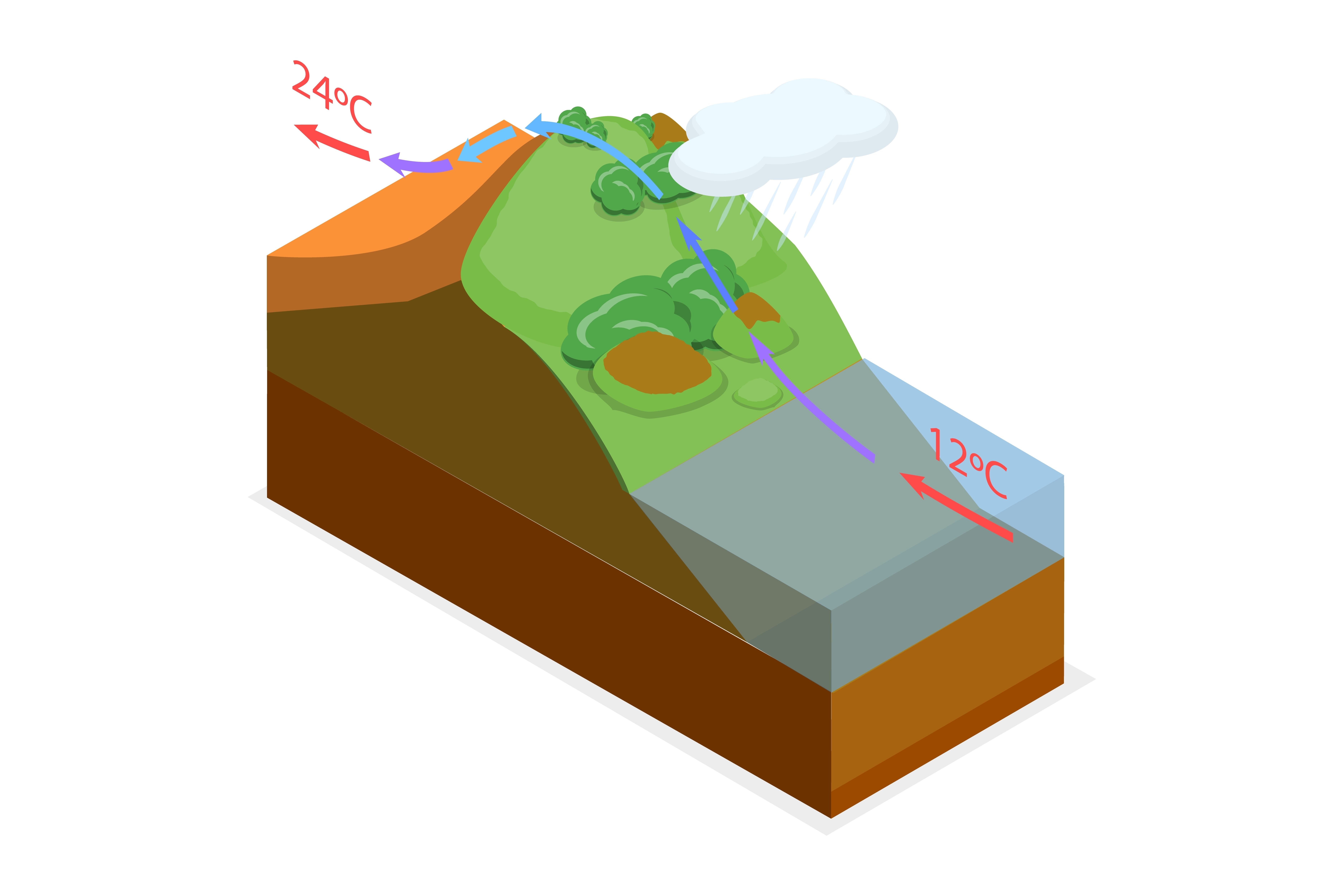Ever wondered why sometimes, it’s horrible weather where you are, and yet at your friend’s house just a few miles away, there’s blissful sunshine? Well, if you happen to live near high ground, it might be down to something called the foehn (or föhn) effect.
ADVERTISEMENT
The foehn effect is a weather phenomenon in which one side of high ground – most often something like a mountain, which we’ll use as an example below – experiences cold, wet weather, whilst conditions on the other side are warm and dry.
This can be explained by moist air being forced upwards when it meets a mountain. “The air then cools and condenses as it climbs, forming rain clouds,” explains weather presenter Stav Danaos for BBC Weather. “As it rains on the windward side, moisture is lost and heat is gained. This warmer air then descends down the other side of the mountain, known as the leeward side.”

The foehn effect in action.
Image credit: TarikVision/Shutterstock.com
The warm, dry wind on the leeward side is what’s known as, funnily enough, a foehn wind.
However, the explanation above isn’t the only one; according to the Met Office, there are four possible mechanisms behind the Foehn effect, and a combination of all can contribute at once.
One of these other mechanisms occurs when the wind hitting one side of the mountain isn’t strong enough to be forced up to the top. Instead, it’s air closer to the top of the mountain that’s sent down to the leeward side, where the change in pressure as it falls causes it to warm up.
Turbulence can also play a part as air passes over mountains, which causes it to mix. “This mixing generally leads to a downward warming and upward moistening of the cross-mountain airflow,” the Met Office explains, “and consequently to warmer, drier foehn winds in the valleys downwind.”
ADVERTISEMENT
Then, since there tends to be less cloud on the leeward side of the mountain, there’s plenty of opportunity for the Sun to warm things up.
Sounds quite nice if you happen to be on the leeward side, but the foehn effect can end up having some hazardous consequences. For example, the balmier temperatures can rapidly melt snow – even during an Antarctic winter – increasing the risk of avalanches and flooding, whilst the warm, dry winds can provide the perfect conditions for the spark and spread of wildfires.
Foehn winds can also be dangerously strong. Back in 1982, Colorado was battered by a series of Chinook winds – the name for foehn winds in the Rocky Mountains region – so intense that trees were uprooted, power lines pulled down, and roofs damaged.
Source Link: What Is The Foehn Effect? The Weird Weather Phenomenon Behind Wildly Different Conditions